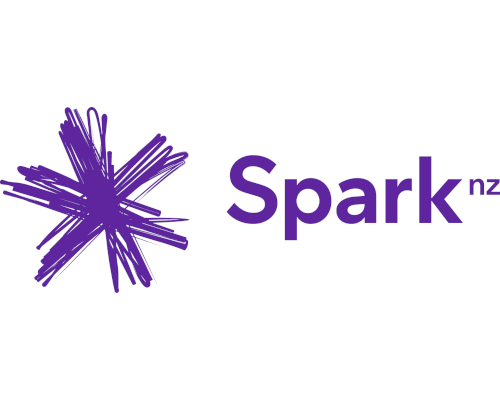Spark Reveals 4G And 5G Wireless Broadband Speeds Using Technology First Introduced By The Commerce Commission

Spark today revealed the actual speeds customers receive on its 4G and 5G wireless broadband plans, thanks to its implementation of a new technology into its latest wireless broadband modems, which allows it to accurately measure speeds, and help customers resolve connectivity issues more effectively.
The speed measurements, which use the same technology from Cisco ThousandEyes (formerly SamKnows) as the Commerce Commission’s quarterly ‘Measuring Broadband New Zealand’ (MBNZ) reports, show that during the first two weeks of April, national peak time* average download speeds across 4G wireless broadband were 62 Mbps, while its 5G wireless broadband plan came in at 333 Mbps.
Spark SME and Consumer Director, Greg Clark said: “We are really happy with the speeds we are seeing across our 4G and 5G wireless broadband plans, and by using the Cisco ThousandEyes technology we are able to demonstrate to our customers the sorts of speeds they can expect when signing up for a wireless broadband plan with Spark.”
Since implementing the technology, Spark has begun displaying its own measured speeds on its website and in marketing materials in place of the 4G industry average results from the MBNZ reports. It has also meant Spark can display 5G wireless speeds for the first time.
“We are keen to have our results included in the Commerce Commission’s next MBNZ report and are in advanced conversations about this. To prepare, in addition to tests running to our servers in Auckland, we have a group of users running tests to the Commission’s test servers as well, and we are seeing extremely consistent results between the two,” said Greg.
Advertisement - scroll to continue readingSpark began measuring speeds for its 5G and 4G urban customers in January and added rural 4G wireless broadband customer testing in April – with results showing that rural customers were receiving speeds on par with their urban counterparts.
“Our results are showing the potential broadband speeds that can be achieved on Spark’s mobile network when using our latest modems. These kinds of wireless speeds are suitable for moderate data users, while being super simple to set up with no installation required,” said Greg.
The Cisco ThousandEyes technology also features a service called ‘RealSpeed’, which Spark is using to help customers diagnose particularly complex connectivity problems that can be difficult to identify. Customers using either a Smart Modem 2 or a 5G Smart modem, can use the RealSpeed page to run tests from both their modem and their device to better identify where problems may be occurring.
Cisco ThousandEyes technology is built into Spark’s Smart Modem 2 for 4G wireless customers, and the Smart Modem used by its 5G fixed wireless customers. The tests don’t impact the customer’s data allowance and don’t interfere with the customer’s connection.
Spark’s own testing is currently done to Spark’s Cisco ThousandEyes server in Auckland, and is in the process of being rolled out to additional servers in Wellington and Christchurch, and eventually, Sydney and LA. Spark’s MBNZ testing report will use the Commerce Commission’s MBNZ test servers located in Auckland, Wellington, and Christchurch.
Note:
- Under the industry’s Broadband Marketing Code, providers are required to use the MBNZ results in marketing which makes speed claims. Where the MBNZ Report does not include the relevant provider, technology-specific or regional-specific data, then the provider can use an alternative testing methodology (such as SamKnows) instead.
- While the MBNZ reports calculate peak time average speeds from all results during hours from 7pm – 11pm, Spark is taking a more conservative approach and using the lowest hourly average speed, from 6pm-12am, instead.
- The Commerce Commission’s MBNZ volunteer testing uses an external ‘white box’ which plugs in to the customer’s modem. Spark is using ‘embedded’ software built into its latest wireless broadband modems. This does not require additional equipment or setup by customers. Spark is able to test to its own test servers and to the Commission’s MBNZ server.
- Spark is working with the Commerce Commission to be able to include results from its embedded testing in the MBNZ report.


 Parrot Analytics: Netflix Earnings - Price Hikes With Minimal Churn | Will Netflix Be A Bright Spot For Markets?
Parrot Analytics: Netflix Earnings - Price Hikes With Minimal Churn | Will Netflix Be A Bright Spot For Markets? Canterbury Museum: Mystery Molars Lead To Discovery Of Giant Crayfish In Ancient Aotearoa New Zealand
Canterbury Museum: Mystery Molars Lead To Discovery Of Giant Crayfish In Ancient Aotearoa New Zealand Ngā Pae o te Māramatanga: Māori Concerns About Misuse Of Facial Recognition Technology Highlighted In Science
Ngā Pae o te Māramatanga: Māori Concerns About Misuse Of Facial Recognition Technology Highlighted In Science Retail NZ: Retailers Call For Flexibility On Easter Trading Hours
Retail NZ: Retailers Call For Flexibility On Easter Trading Hours WorkSafe NZ: Worker’s Six-Metre Fall Prompts Industry Call-Out
WorkSafe NZ: Worker’s Six-Metre Fall Prompts Industry Call-Out PSGR: Has MBIE Short-Circuited Good Process In Recent Government Reforms?
PSGR: Has MBIE Short-Circuited Good Process In Recent Government Reforms?



